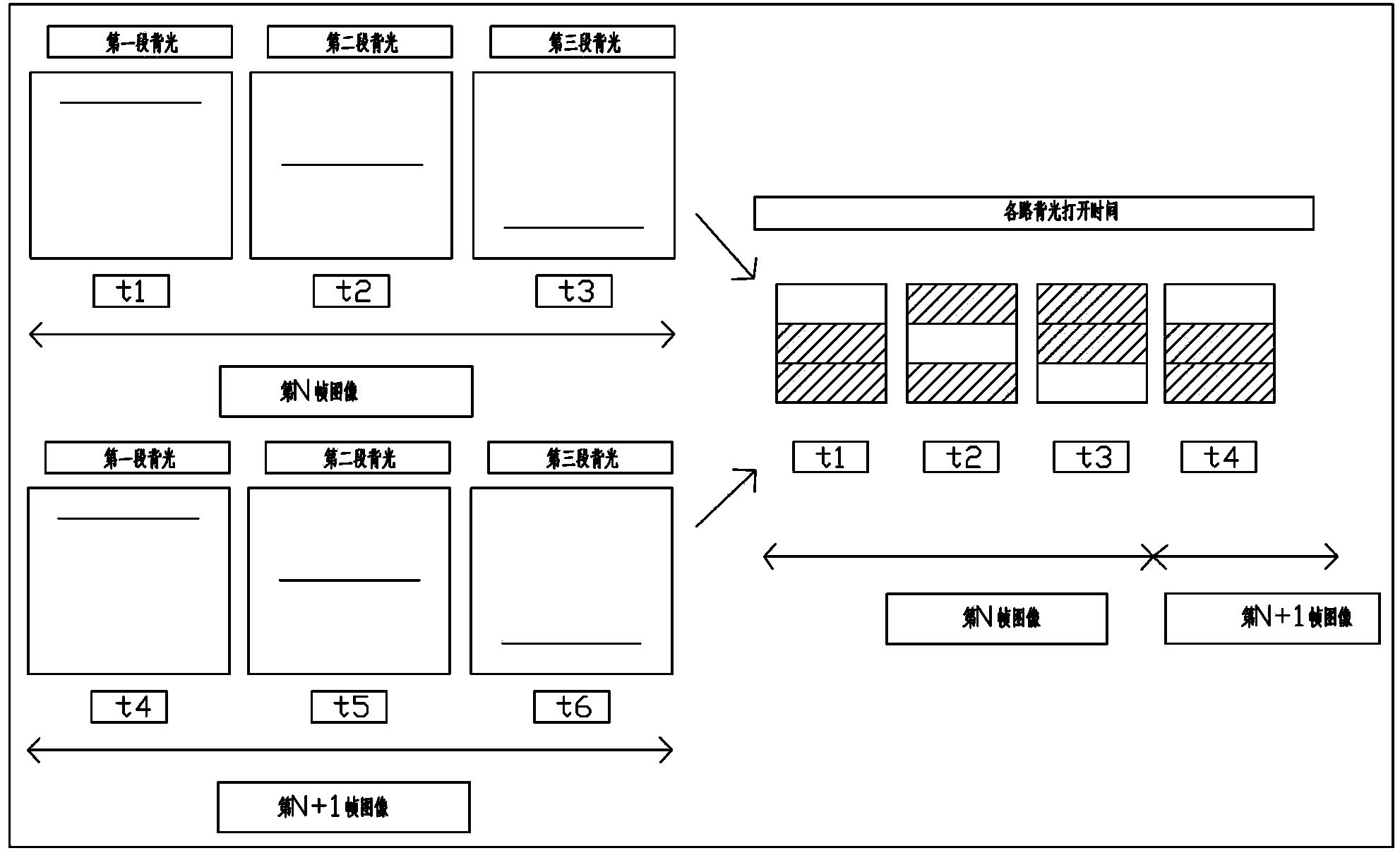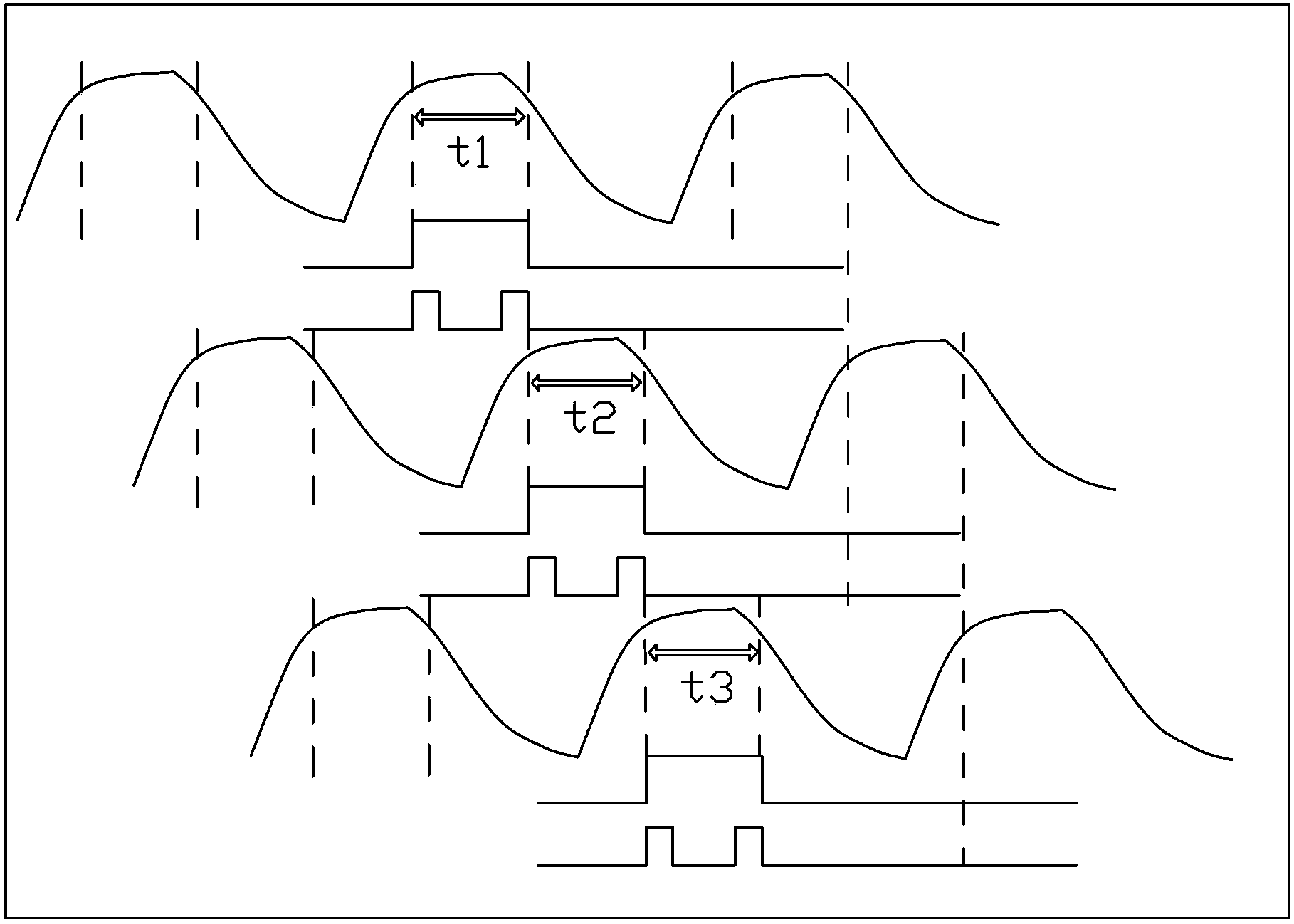Method for reducing trailing phenomenon of liquid crystal screen and liquid crystal display device
A technology of liquid crystal display device and liquid crystal screen, which is applied to static indicators, instruments, etc., to achieve the effect of reducing the smearing phenomenon of moving images and reducing the flickering phenomenon.
- Summary
- Abstract
- Description
- Claims
- Application Information
AI Technical Summary
Problems solved by technology
Method used
Image
Examples
Embodiment 1
[0033] The concrete steps of this embodiment are as follows:
[0034] 1. Divide the backlight area of the display screen into multiple sections; for example, it can be divided by the number of LED light strips. Assuming that the number of LED light strips is 6 from top to bottom, the backlight area can be from top to bottom The lower part is divided into 2, 3 or 6 parts. The display screen corresponding to each backlight area is also divided into 2, 3 or 6 areas.
[0035] 2. Divide the time used by one frame of image into 2, 3 or 6 time periods according to the number of segments in the backlight area;
[0036] 3. Scan each segment of the display screen in order from top to bottom (or vice versa), and at the same time turn on each backlight area in sequence of time segments.
[0037] For ease of understanding, explain with specific examples:
[0038] Such as figure 1 As shown, within the time of one frame of image, the screen is divided into 3 parts from top to bottom on...
Embodiment 2
[0044] Below are the concrete control steps of this embodiment:
[0045] 1. Divide the backlight area of the display screen into multiple areas;
[0046] 2. Divide the time used by one frame of image into time segments, and the number of segments in the time segment is the same as the number of segments in the backlight area;
[0047] 3. In the time used by one frame of image, every time a time period passes, the corresponding backlight area segments are lit up in sequence, and the corresponding backlight area is divided into two or more points in this time period. Bright.
[0048] For ease of understanding, explain with specific examples:
[0049] Such as figure 1 As shown, within the time of one frame of image, the screen is divided into 3 parts from top to bottom on average. When the Nth frame of image is displayed, after the first backlight is turned on for the first time within t1, after a certain time delay , turn on the first segment of backlight again; after turn...
Embodiment 3
[0061] Such as Figure 4 As shown, the SOC main board sends an LVDS signal to the TCON board. When the TCON board scans to the initial position of the current segment of the LCD screen, the output synchronization signal is sent to the LED driver to turn on the corresponding segment of the LED backlight. When segmenting the LCD screen, the output synchronous signal is sent to the LED driver to turn off the LED backlight of the corresponding segment.
[0062] Specifically, refer to figure 1 and figure 2 As shown, within the time of one frame of image, the screen is divided into 3 parts from top to bottom on average. When the Nth frame (current frame) image is displayed, starting from time t1, the TCON board outputs a signal at the beginning of time t1 to scan the first time. The initial position of a section of LCD screen, and at the same time output a synchronous signal sent to the LED driver to turn on the corresponding first section of LED backlight; when this section of L...
PUM
 Login to View More
Login to View More Abstract
Description
Claims
Application Information
 Login to View More
Login to View More - Generate Ideas
- Intellectual Property
- Life Sciences
- Materials
- Tech Scout
- Unparalleled Data Quality
- Higher Quality Content
- 60% Fewer Hallucinations
Browse by: Latest US Patents, China's latest patents, Technical Efficacy Thesaurus, Application Domain, Technology Topic, Popular Technical Reports.
© 2025 PatSnap. All rights reserved.Legal|Privacy policy|Modern Slavery Act Transparency Statement|Sitemap|About US| Contact US: help@patsnap.com



